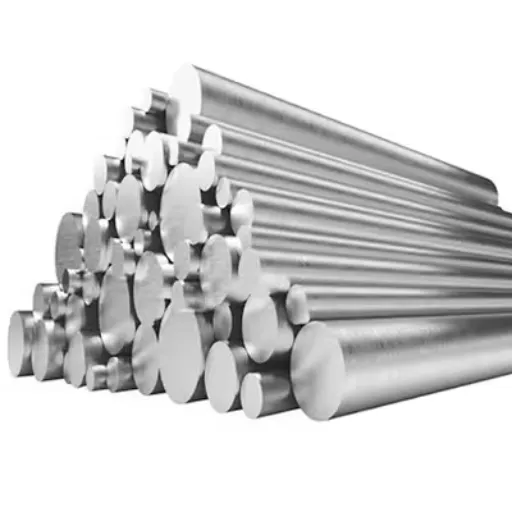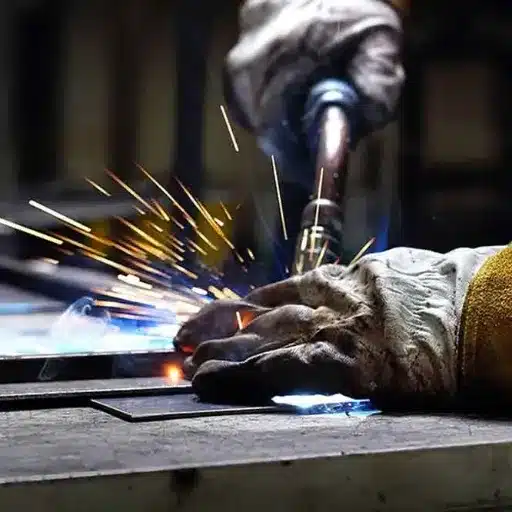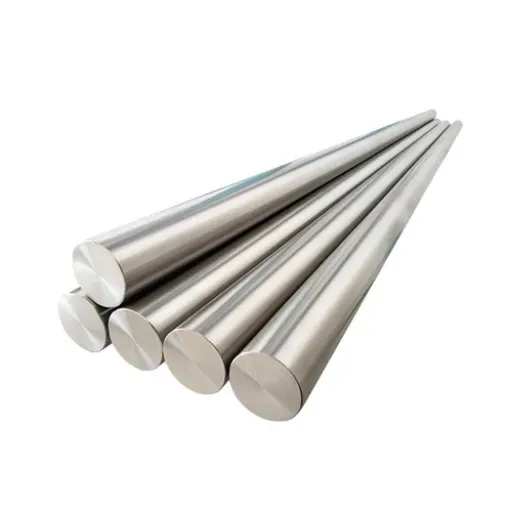Thought through and fabricated with care, 6150 alloy steel accommodates many engineering applications due to its commendable high-strength features. This alloyed steel’s wear resistance and strength surpass any other available material in the market regarding reliable toughness and pressure resistance demands. No matter if you are an engineer, manufacturer or a curious hobbyist, learning about the 6150 alloyed steel will increase your knowledge regarding its multiplicative applications and benefits. This article will explore its practicality in depth, further analyzing its characteristics and beneficial factors and providing you with a modern guide of industries leveraging the contemporary metallurgy.
What is 6150 Steel and Its Composition?
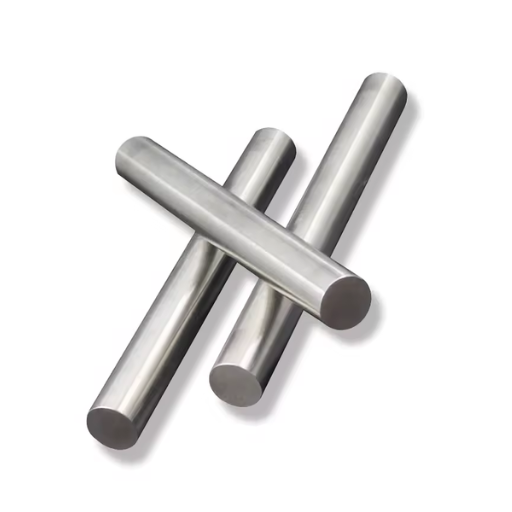
6150 steel is a low-alloy steel known for its high strength, toughness, and resistance to wear. The identity of this steel comes from being a low-alloy steel with high durability and force-resistant features, along with high toughness. The composition results show it’s trace elements of wrought iron with chromium of 0.8 to 1.1%, 0.53% carbon, Vanadium 0.15%- 0.25% enhances the durability and hardenability of the metal granting along with the boosted Durability from Vanadium augmenting it’s performance enabling the steel to excel in tasks like automative and industrial machines, tools, and machinery, amplifying the precision of the steel. Due to these traits being in constant demand, the steel remains relevant, boosting there value in the market of parts, automotives machinery and other tools.
Understanding the Basics of 6150 Alloy Steel
| Key Point | Details |
|---|---|
| Type | Chromium-vanadium alloy steel |
| Chemical Composition | Fe, Cr (0.8-1.1%), Mn (0.7-0.9%), C (0.48-0.53%), Si, V, P, S |
| Density | 7.85 g/cm³ |
| Tensile Strength | 670 MPa (ultimate), 415 MPa (yield) |
| Hardness | Brinell: 197, Rockwell B: 92 |
| Heat Treatment | Hardened at 871°C, tempered at 899°C |
| Machinability | Rating of 59 (annealed condition) |
| Welding | Requires preheating and post-weld stress relief |
| Applications | Shafts, gears, pinions, springs, hand tools, heavy-duty machinery |
| Key Properties | High strength, toughness, shock resistance, and abrasion resistance |
Key Elements in 6150 Alloy
Known widely for its unique alloying of strength, toughness, and wear resistance, 6150 alloy steel contains several critical elements that further alloy’s properties. They include:
- Carbon (C)
Composition Range: 0.48-0.53%
Role and Benefits: Carbon is primary in every steel alloy. Its irreplaceable importance in enhancing hardness and strength through heating treatment is noteworthy. Carbon also helps 6150 resist wear.
- Chromium (Cr)
Composition Range: 0.80 – 1.10%
Role: It improves corrosion resistance, hardenability, and material strength. It also aids in preventing scaling at high temperatures, exposing the alloy to hot environments.
- Vanadium (V)
Composition Range: 0.15 – 0.25%
Role: Refines grain structure, contributing to the steel’s toughness. It also improves fatigue strength and adds to impact and shock resistance.
- Manganese (Mn)
Composition Range: ~0.7- 0.9%
Role: Aids in deoxidizing the steel during manufacturing. Also aids in increasing ductility and hardenability of the alloy.
- Phosphorus (P) and Sulfur (S)
Maximum Phosphorus ≤ 0.035% and Sulfur ≤ 0.040%
Role: Keep highly corrosive elements to a minimum to maintain alloy integrity without making it brittle and weak. Controlled permits maintain structural integrity.
- Silicon (Si)
Composition Range: 0.15-0.35%
Role and Benefits: In the alloy, silicon is marketed for his services as a deoxidizer and also increases the strength and hardness of the alloy while retaining its ductility.
Mechanical Properties of 6150 Alloy Steel
The composition given above affects the following key mechanical properties of the 6150 alloy steel:
- Hardness (HRC): Usually falls between 48 and 55 after heat treatment.
- Tensile Strength: Can go up to ~1950 MPa depending on how it’s processed.
- Yield Strength: Is around ~1650 MPa.
- Elongation: About 8-10%, showing stretchable ductility and flexibility.
- Impact Toughness: Great resistance to impact caused by the grain-refining characteristics of vanadium.
Applications of 6150 Alloy Steel
Due to its exceptional synergistic strength and toughness, 6150 steel finds applications in:
- High-performance automotive components (suspension springs, axles)
- Heavy-duty tools (wrenches, chisels)
- Machinery tools with dynamic load and severe wear resistance
- Industrial tools and machinery are subjected to high stress and impacts
Across many demanding industries where high-performance materials are required, this alloy has become their material of choice. Further, ongoing developments in modern heat treatment techniques augment the steel’s versatility and potential uses.
Characteristics of 6150 Steel
With 6150 steel also comes commendable features including immense stamina possessed, enabling remarkable resistance on wear, high overall strength, and notably upstanding toughness making the steel unrivalled in sectors industrial and automotive sectors while enabling efficiency at elevates.,
How is 6150 Alloy Steel Processed?
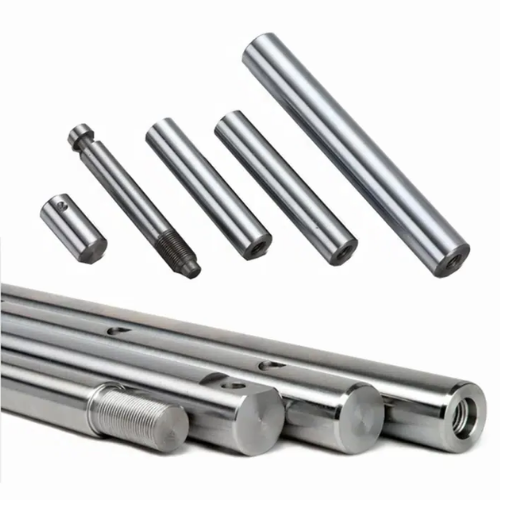
The 6150 alloy steel has distinct properties that can be modified further with specific alloying steps. Its processing begins with heating the steel to a high temperature for forging or shaping. Annealing for 6150 alloy steel is performed after shaping to soften the material and enhance its machinability. This is followed by heat treatment, in which the steel is quenched in oil to increase hardness to give a solid tensile strength. The final steps of tempering are to balance toughness and reduce internal stress while optimizing performance for demanding applications. This method guarantees that 6150 alloy steel meets the predetermined high-performance standards.
Metals Processing of 6150 Steel
| Key Point | Details |
|---|---|
| Forging Temperature | 1204°C (2200°F) |
| Annealing Temperature | 843°C (1550°F), air cooled |
| Normalizing Temperature | 899°C (1650°F), followed by air cooling |
| Hardening Temperature | 871°C (1600°F), oil quenched |
| Tempering Range | 400-650°C (752-1202°F), air cooled |
| Machinability Rating | 59% (annealed condition) |
| Welding Requirements | Preheating and post-weld stress relief are required |
| Cutting Speed (Turning) | 225-305 m/min (740-1000 SFM) |
| Cutting Speed (Milling) | 140-190 m/min (460-620 SFM) |
| Applications | Shafts, gears, springs, heavy-duty machinery |
Heat Treatment and Annealing Processes
This provides an overview of the heat treatment and annealing cycles performed on the 6150 alloy steel for achieving its certain mechanical properties. Each individual step provides distinct attributes such as: hardness, toughness, and relief of stresses. The following are key processes:
- Normalizing
- Range: 1575-1650 °F ( 857°C to 899°C)
- Objective: Improving the grain microstructure to achieve uniformity across the composition of the steel
- Annealing
- Range: 1450°F to 1600°F (788°C to 871°C) in conjunction with slow cooling in a furnace.
- Objective: Reduction of hardness and improvement of machinability before further processing.
- Quenching
- Medium: Commonly Oiled
- Temperature: Oil is decreased to 1500°F to 1600°F (815°C to 871°C), followed by rapid cooling to enhance hardening and increase tensile strength.
- Purpose: Demanding application standards are met through increased tensile strength and hardness.
- Tempering
- 500°F to 850°F for preferred combinations of stiffness and durability.
- Purpose: acceptable levels of brittleness and stress together with moderate hardness for durability is ensured troughs restructuring residual stresses.
- Stress Relieving
- Range: 1100-1300°F (593°C to 704°C)
- Hold time: 1 hour per inch of thickness, followed by controlled cooling.
- Purpose: scrub the residual stress without changing the components mechanichal properties induced through mechanical work and machining.
The heat treatments and annealing steps mentioned are crucial in modifying the characteristics of 6150 alloy steel to suit specific industrial needs and guarantee its performance under strenuous and critical conditions.
Preheating and Post-Weld Stress Techniques
In pre- and post-weld stress operations, I concentrate on attaining maximum efficiency by exercising precise temperature control. During preheating, I raise the material to 400°F and 600°F (204°C to 316°C), a range designed to eliminate thermal shock while enhancing weld integrity. My procedures involve post-weld heat treatment and careful heating to relieve residual stresses. Each step is critical to improving mechanical properties while ensuring the material’s operational durability.
What are the Applications of 6150 Alloy Steel?
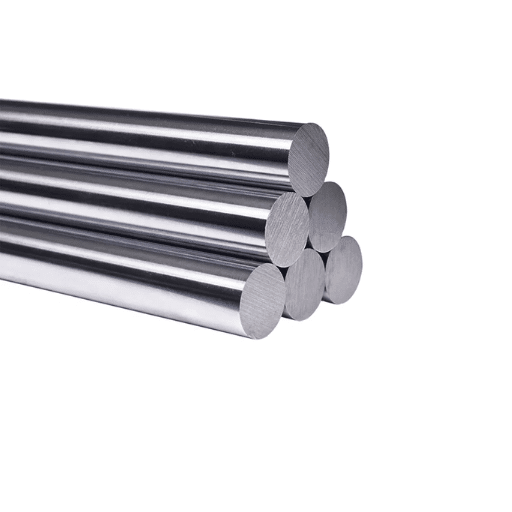
Typically, 6150 alloy steel finds its applications in components that need high strength and toughness and can cope with high levels of wear and tear. It is extensively used in the automotive industry to produce axles, shafts, and gears. It is also used in hand tools, springs, and other implements that undergo high operational stress levels. The steel type’s bendable flexibility and rigidity make the material reliable for components used in heavy industrial machines and equipment.
Common Uses of 6150 Spring Steel
| Key Point | Details |
|---|---|
| Automotive Industry | Axles, shafts, transmission gears, and components |
| Aerospace Industry | Landing gear and engine components |
| Heavy Machinery | Crankshafts, connecting rods, and bearings |
| Spring Manufacturing | Leaf springs and coil springs |
| Tool Manufacturing | Drill bits, reamers, and cutting tools |
| Industrial Equipment | Pressure vessels and pump components |
| Hand Tools | Wrenches, pliers, and other durable tools |
| Gears and Pinions | High-stress and wear-resistant applications |
| Arbors and Spindles | Used in machinery for rotational motion |
| High-Strength Studs | Fasteners requiring high tensile strength |
Industries Relying on 6150 Steel
| Industry | Key Applications |
|---|---|
| Mechanical Engineering | Bearings, gears, hydraulic rods, spindles |
| Automotive | Drive shafts, crankshafts, gears, springs |
| Aerospace | Landing gears, wing supports, connectors |
| Tool Manufacturing | Wrenches, pliers, saw blades, molds |
| Agriculture | Plowshares, mower blades, tractor parts |
What are the Advantages of Using 6150 Round Steel?

- High Strength and Durability—6150 round steel has remarkable strength, allowing it to endure world-class stress and conditions.
- Excellent Hardness – It reflects superior hardness which helps to resist wear and tear thus increasing its service life.
- Enhanced Toughness – Its toughness helps it endure impact and stress without shattering.
- Versatility – Can be used in auto mobile parts, tools and industrial equipment without any further processing.
- Good Fatigue Resistance – It has a very high fatigue resistance, which is helpful for components under constant repeating stress.
The above factors provide 6150 round steel with reliability and economy for critical applications.
Strength and Durability Factors
- High Tensile Strength—6150 Round Steel can withstand considerable loads without deforming, as its tensile strength is between 1200 and 1400 MPa.
- Exceptional Impact Toughness – Its Charpy impact value typically ranges from 80 to 100 Joules, representing a high degree of toughness against impact forces or shocks.
- Resistance to Wear and Tear—Due to optimal carbon and chromium concentration, 6150 steel has excellent wear resistance, which increases its surface hardness.
- Strengthening through Heat Treatment—The material has improved mechanical properties such as ductility and hardness due to the quenching and tempering heating processes performed on it.
- Corrosion Resistance—6150 steel is not considered stainless steel, but its chromium content does offer some protection against rust and corrosion. However, it is best suited for more arid environments where moisture is limited.
6150’s Low Distortion Properties
| Key Point | Details |
|---|---|
| Material Composition | Chromium and vanadium enhance hardness and stability |
| Heat Treatment | Easily heat treated with minimal distortion |
| Hardness Range | Achieves Rockwell C-55 to C-58 after hardening |
| Stress Resistance | High resistance to stress and vibration |
| Dimensional Stability | Maintains shape during machining and heat treatment |
| Applications | Ideal for springs, gears, and high-stress components |
| Machinability | Good machinability with low deformation during processing |
| Shock Resistance | Excellent resistance to impact and shock loads |
Comparison with Other Steel Grades
| Key Point | 6150 Steel | 5160 Steel | 4140 Steel |
|---|---|---|---|
| Primary Alloying Elements | Chromium, Vanadium | Chromium, Manganese | Chromium, Molybdenum |
| Carbon Content | 0.48-0.53% | 0.55-0.65% | 0.38-0.43% |
| Hardness | Rockwell C-55 to C-58 | Rockwell C-50 to C-55 | Rockwell C-40 to C-50 |
| Tensile Strength | Up to 1200 MPa | 660-1150 MPa | 1020 MPa |
| Shock Resistance | Excellent | High | Moderate |
| Wear Resistance | High | Moderate | Moderate |
| Machinability | Moderate (Rating: 59%) | Low | High |
| Weldability | Requires preheat, stress relief | Requires preheat, complex process | Easier, less preheat needed |
| Applications | Springs, gears, high-stress parts | Automotive springs, cutting tools | Shafts, crankshafts, machinery |
| Cost | Higher due to vanadium content | Moderate | Lower |
How to Choose the Right 6150 Steel Stock?

Here are a few things you need to keep in mind when looking for a 6150 steel stock:
- Application Requirements – Assess whether 6150 steel’s properties such as high strength, shock resistance, and stress resistance complement your component’s requirements for springs, gears, and other high-load components.
- Material Certification—Verify that the stock steel is certified by proper authorities and adheres to quality standards regarding reliability and usefulness.
- Heat Treatment Needs—Check if the steel has been treated to appropriate levels of heat, as this determines its strength and stability in size and shape.
- Supplier Reputation – Work with an alias provider specializing in alloy steels to guarantee the constant quality of the product and offer help as needed.
These points will lead to choosing the most appropriate steel stock for the necessary requirements and are crucial for optimizing performance.
Factors Influencing 6150 Steel Selection
Utilizing 6150 steel in any application requires a strategic approach and key decisions based on its performance factors. In this case, it bears the five core considerations that best assist in the steel’s selection:
- Mechanical Properties—Assess tensile strength, yield strength, and hardness to determine whether the steel fulfills the required mechanical needs. In this case, 6150 steel offers approximately 1,290 MPa tensile strength, which is accompanied by shock resistance.
- Heat Treatment Options – The attributes that tempering, quenching, and annealing processes impart to steel such as higher toughness or hardness must be included in the steel selection.
- Fatigue Resistance—The material’s ability to endure cyclic loading without cracks needs to be assessed. The 6150 alloy steel is recognized for excellent fatigue strength, enabling its usage in springs and torsion bars.
- Corrosion Resistance – In terms of offering 6150 steel, moderate corrosion resistance is achievable. The primary drawback with this steel is that extra coatings or treatments are sometimes needed to fit the operational environment.
- Machinability and Workability – The degree to which the steel is workable defines the standards of its machining and whether it can successfully be adapted to prescribed conditions. Before processing, proper annealing enhances the machining properties of 6150 steel.
Considering all of these factors will help you make the most optimal decision when choosing the correct 6150 steel for your application while still ensuring a balance in performance, durability, and cost.
Understanding 6150 Steel Grade Options
| Key Point | Details |
|---|---|
| Type | Chromium-vanadium alloy steel |
| Standards | ASTM A29, EN 10083, JIS G4801, GB/T 3077 |
| Chemical Composition | C: 0.48-0.53%, Cr: 0.8-1.1%, V: ≥0.15% |
| Hardness | Rockwell C: 36, Brinell: 331 |
| Tensile Strength | Up to 1145 MPa |
| Yield Strength | Around 1000 MPa |
| Applications | Springs, gears, shafts, hand tools, machinery parts |
| Heat Treatment | Oil hardening and tempering |
| Machinability | Moderate, rating of 55-59% |
| Key Properties | High toughness, shock resistance, wear resistance |
Ensuring Quality in 6150 Metals Products
Achieving the required quality for 6150 metals products necessitates precision at every stage of the production and supply chain associated with these products. The following metrics are essential in preserving the functionality, dependability, and replication of 6150 steel:
- Verification Of Chemical Composition
The foundational process in the quality of 6150 steel is the assurance of the correct chemical composition. Industry average standards dictate that 6150 steel has Carbon in the amount of 0.48-0.53%, Chromium 0.70-0.90%, Molybdenum 0.15-0.30%, Manganese 0.60-0.95%, and Silicon and Phosphorus in negligible quantities \ geq0 %. The steel’s composition is superconductivity spectrometry grade and hardness standards, making it optimal in strength and softness.
- Annealing, Quenching, And Tempering
To fulfill the steel’s requirements on mechanical components: tensile force resistance, shock resistance, and rigidity augmenting, heat treatment processes like annealing, quenching, and tempering are to be applied. Post machining, 6150 steel reaches an average rigidity of 57 to 62 HRC. Uneven hardening and distortion of the material during the cooling or tempering process cannot occur, hence requiring uniform consistency of handling all rates of cooling and temperature.
- Non-Destructive Testing (NDT)
Ultrasonic and X-ray testing, together with Magnetic particle inspection, are superior modern flaw detectors that ensure steel does not contain any internal flaws, cracks, or inclusions. They reproduce homogeneous materials free of weak regions that cannot withstand immense stress, thus ensuring no break in demanding applications.
- Dimensional Accuracy
Meticulous supervision of the manufacturing processes guarantees that 6150 steel products are within the specified tolerances for thickness, width, and other critical measurements. Uniformity in dimensions enables effortless incorporation into diverse industrial uses, including springs, shafts, and gears.
- Supplier Certifications
It is essential to work with certified suppliers who, for instance, comply with ISO 9001 or ASTM and SAE standards. These certifications ensure that the steel suppliers’ 6150 steel sources are maintained under international quality control standards.
- Real-World Performance Data
Customer reviews and field data are significant for refining production processes. Consider, for instance, the use of 6150 steel in the automotive industry for suspension systems and other high-demand industrial parts. Its testing demonstrates superior performance concerning fatigue strength and wear under cyclical loads.
Supporting 6150 steel to industrial requirements by employing advanced quality control processes along with other technical specifications ensures the steel is up to par. The accuracy of 6150 industrial steel requirements helps maximize product performance, safety, longevity, and versatility.
References
- Tribological behavior of heat treated AISI 6150 steel – Published on ScienceDirect.
- The influence of microstructure on the tensile and fatigue behavior of SAE 6150 steel – Published on SpringerLink.
- Effect of tempering temperature on microstructure and mechanical properties of AISI 6150 steel – Published on SpringerLink.
Frequently Asked Questions (FAQ)
Q: What is AISI 6150 alloy steel?
A: AISI 6150 alloy steel is a chromium vanadium type spring steel known for its high strength, toughness, and excellent fatigue resistance. It is commonly used in applications requiring greater hardness and high resistance to wear and fatigue.
Q: What are the primary components of AISI 6150 alloy steel?
A: AISI 6150 alloy steel primarily consists of carbon, chromium, and vanadium. These elements contribute to its high strength, hardness, and ability to withstand significant stress and wear.
Q: What are the typical applications of 6150 steel grade?
A: The 6150 steel grade is suitable for applications like automotive parts, springs, and other components that require high strength and resistance to wear and fatigue. Due to its excellent mechanical properties, it is also used in tools and other high-stress applications.
Q: How does the hardness of AISI 6150 alloy steel compare to other steels?
A: AISI 6150 alloy steel offers greater hardness than many other steel grades, making it ideal for applications requiring high wear resistance and strength. Its hardness can be further enhanced through heat treatment processes.
Q: Can AISI 6150 alloy steel be heat-treated?
A: Yes, 6150 is typically heat-treated to improve its strength and hardness. It is easily heat-treated and can be tempered to achieve the desired mechanical properties, making it versatile for various applications.
Q: What are the distortion properties of AISI 6150?
A: AISI 6150 has low distortion properties, which means it maintains its shape and dimensions well during heat treatment processes, making it ideal for precision components.
Q: How does vanadium contribute to the properties of AISI 6150 alloy steel?
A: Vanadium in AISI 6150 alloy steel enhances its strength, hardness, and wear resistance. It also contributes to the steel’s ability to withstand high stress and fatigue.
Q: What is the significance of post-weld stress relieving for AISI 6150?
A: Post-weld stress relieving is important for AISI 6150 to reduce residual stresses that occur during welding. This process helps prevent cracking and distortion, ensuring the integrity and performance of the welded component.
Q: How does AISI 6150 alloy steel resist wear and fatigue?
A: The combination of carbon, chromium, and vanadium in AISI 6150 alloy steel provides excellent resistance to wear and fatigue. These elements increase hardness and toughness, making the steel suitable for high-stress applications.
Q: What are the benefits of using SAE 6150 spring steel?
A: SAE 6150 spring steel offers high strength, toughness, and excellent fatigue resistance, making it ideal for springs and other components subjected to cyclic loading. Its ability to maintain performance under stress makes it a preferred choice in many engineering applications.

